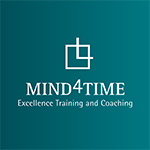Porto, PORTUGAL
END OF CHAPTER III - GOALS & DIRECTION
Visualizing your goals has long been regarded as essential by many authors in the achievement arena. Knowing what we want is thus the first step for that projection. Fear plays an important role in setting what is often internally visualized. Our direction follows what we most focus on.
In a world of multiple choices, the freedom of choosing can be paradoxically impaired by the uncertainty of picking the best option. Possible regret may well explain how having more choices doesn't always mean more satisfaction. 'Not choosing' can seem to mean less liability for the results, but ultimate freedom of choice requires more 'choosing not to' than 'not choosing'.
For many tasks, the relation between the amount of resources invested versus the quality of results follows a typical curve that has "perfection" as asymptote. If we associate it with our identity or level of professionalism, we may fall into "perfectionism". Perfectionism gets a single task very well done, but fails to optimize global productivity. Defining success criteria for each task is essential to implement the concept of "good enough". Purpose and added value will guide that criteria definition, and the question of "What's the purpose/value?" is thus at the core of Direction.
Only by understanding and truly accepting the impossibility of doing it all, do we really get the freedom of choosing. It's up to us to choose the meaning of our pools of opportunities. Pressure relief may well reside on reassessing that meaning - have to? or want to? Concerns outside our area of influence tend to undermine our focus and productivity.
1. Picture it
Be concrete about what you want. Visualize it with detail. Don't let fear rule you imagineering. If you don't want something, picture an alternative (don't just picture what you don't want with a mental "NO" attached).
2. It's ok to let go
Be ok with letting go of opportunities. You may think of life like a river running with fish. You don't have to be sorry for all the fish that's passing while you are not getting them. You probably realise you have enough.
3. Avoid regreting
Regreting is useful to enhance your future choices, unless it becomes blocking. Enjoying intensily what you have chosen, may me more valuable that the quality of your decision. Don't spoil what you have now by "ruminating" too much on everything else you could have instead, if some choices had been made differently.
4. Define success criteria for everything you do
Good enough is a central notion of productivity, even if "enough" can be a very high standard. Keep focused on the added value of any task you do. Apply also this notion of Purpose to high level roles like your job as a parent. That's how you know where to direct your effort.
5. Change "have to's" into "want to's"
The number of opportunities to add value can be overwhelming. Set your direction so you can be really free about choosing which area of the world you want to change and which you want to accept. Pressure relief can many times emerge from acceptance. Move yourself towards what you want, and renegotiate commitments to allow for that.
I hope you've enjoyed this 3rd chapter - GOALS & DIRECTION. I would love to hear your comments on this...
- Did you review yourself in some examples? Which?
- What was your favourite TRICK in this chapter?
- What obstacles make some TRICKs difficult or even impossible in your special case?
- What other TRICKs do you recommend concerning GOALS & DIRECTION?
Thanks for the feedback!...




